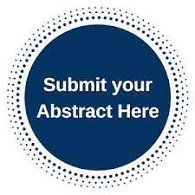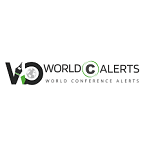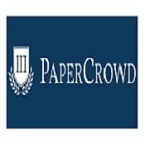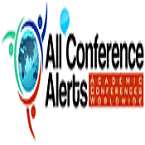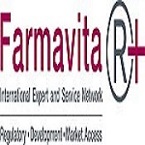Sessions and Tracks
Track 1: Novel Separation Techniques in Chemistry
The process of separation is an integral unit operation in most of the Modern Pharmaceutical Techniques, chemical and other process plants. Among the separation processes, some are standard and conventional processes, like, distillation Process, adsorption process, etc. These processes are quite common and the relevant technologies are well developed and well-studied. On the other hand, newer separation processes like, membrane based techniques, super critical fluid extraction, chromatographic separation, etc., are gaining importance in modern days.
Related Separation Techniques Journals:
Canadian Journal of Chemistry, Chemistry Central journal, Chinese Journal of Chemistry, European Journal of Medicinal Chemistry, European Journal of Organic Chemistry, International Journal of Chemical Sciences, International Journal of Medicinal Chemistry, Journal of the American Chemical Society, Journal of the Brazilian Chemical Society, The Journal of Organic Chemistry, Journal of Organometallic Chemistry, Organic Process Research and Development.
Related Societies
Europe: Danish Chemical Society, Croatian Chemical Society
Asia: Chemical Society of Japan, Chemical Society Located in Taipei
USA: American Chemical Society, American Crystallographic Association
Track 2: Emerging Separation Technologies
There is a broad growing worldwide interest in step change Separation Technologies, in key areas of physical sorption, distillation process, membranes, absorption and heat exchange. Many of the innovative research activities are initiated by growing concern with environment (e.g. Co2 capture), equipment and energy cost, a number of new technologies find applications in neighboring processes. This new technology includes ion-pair-reverse liquid chromatography, Multi-dimensional Separations in 3D-printed devices, Industrial membrane filtration technology, Magnetic Separation Techniques in various fields, Cell Separation Techniques in microbiology, super-critical fluid chromatography (SFC), Hydrophilic interaction chromatography (HILIC), and Multidimensional Gc separation.
Related Separation Techniques Journals:
Canadian Journal of Chemistry, Chemistry Central journal, Chinese Journal of Chemistry, European Journal of Medicinal Chemistry, European Journal of Organic Chemistry, International Journal of Chemical Sciences, International Journal of Medicinal Chemistry, Journal of the American Chemical Society, Journal of the Brazilian Chemical Society, The Journal of Organic Chemistry, Journal of Organometallic Chemistry, Organic Process Research and Development.
Related Societies
Europe: Danish Chemical Society, Croatian Chemical Society
Asia: Chemical Society of Japan, Chemical Society Located in Taipei
USA: American Chemical Society, American Crystallographic Association
Track 3: Basic Separation Techniques
Most of the materials in our surroundings are mixture of two or more components. Mixtures are either heterogeneous or homogeneous. Homogeneous mixtures are uniform in composition, but Heterogeneous mixtures are not uniform in composition. The choice of Separation Techniques is based on the mixture type and difference in the chemical properties of the constituents in mixture. This track includes all the basic Separation Techniques like crystallization, distillation, centrifugation, filtration and other methods along with their advancements.
Related Separation Techniques Journals:
Canadian Journal of Chemistry, Chemistry Central journal, Chinese Journal of Chemistry, European Journal of Medicinal Chemistry, European Journal of Organic Chemistry, International Journal of Chemical Sciences, International Journal of Medicinal Chemistry, Journal of the American Chemical Society, Journal of the Brazilian Chemical Society, The Journal of Organic Chemistry, Journal of Organometallic Chemistry, Organic Process Research and Development.
Related Societies
Europe: Danish Chemical Society, Croatian Chemical Society
Asia: Chemical Society of Japan, Chemical Society Located in Taipei
USA: American Chemical Society, American Crystallographic Association
Track 4: Separation Processes in Chemical Engineering.
Separation processes are processes that use physical, chemical, or electrical forces to isolate or concentrate selected constituents of a mixture—are essential to the chemical, petroleum refining, and materials processing industries. The traditional chemical engineering methods of separation and purification include distillation, crystallization, adsorption, membrane processes, absorption and stripping, and extraction.
Related Separation Techniques Journals:
Canadian Journal of Chemistry, Chemistry Central journal, Chinese Journal of Chemistry, European Journal of Medicinal Chemistry, European Journal of Organic Chemistry, International Journal of Chemical Sciences, International Journal of Medicinal Chemistry, Journal of the American Chemical Society, Journal of the Brazilian Chemical Society, The Journal of Organic Chemistry, Journal of Organometallic Chemistry, Organic Process Research and Development.
Related Societies
Europe: Danish Chemical Society, Croatian Chemical Society
Asia: Chemical Society of Japan, Chemical Society Located in Taipei
USA: American Chemical Society, American Crystallographic Association
Track 5: Role of Spectroscopy as Separation Technique
Spectroscopy is study of materials interaction with light, generally through scattering, absorption Process, or transmission and is very powerful tool in material science. The amount of material interaction depends on energy or wavelength of light and can provide a wealth of information about physical and chemical properties of those materials. The track session includes various spectroscopic techniques along with improved Hyphenated techniques developed using spectroscopy cover under it.
Related Separation Techniques Journals:
Canadian Journal of Chemistry, Chemistry Central journal, Chinese Journal of Chemistry, European Journal of Medicinal Chemistry, European Journal of Organic Chemistry, International Journal of Chemical Sciences, International Journal of Medicinal Chemistry, Journal of the American Chemical Society, Journal of the Brazilian Chemical Society, The Journal of Organic Chemistry, Journal of Organometallic Chemistry, Organic Process Research and Development.
Related Societies
Europe: Danish Chemical Society, Croatian Chemical Society
Asia: Chemical Society of Japan, Chemical Society Located in Taipei
USA: American Chemical Society, American Crystallographic Association
Track 6: Advancements in Sample Preparation Techniques
The primary goal of sample preparation is to isolate one or several target analytes from the other components of the sample mixture (matrix). Depending on their nature and concentration levels, co-components of the sample matrix can influence the quantitation of target analyte(s) during subsequent liquid chromatography-mass spectrometry (LC-MS) or tandem mass spectrometry (LC-MS/MS) experiments if not removed prior to analysis. The development of new LC-MS/MS methods for small molecules in biological fluids is becoming increasingly more challenging, because of the need to continuously achieve higher sensitivity and better assay robustness in complex bio fluids such as serum, plasma, urine, oral fluid or cerebrospinal fluid (CSF). In addition, because of the very low concentration levels of pharmaceutical targets, samples often need to be pre-concentrated before analysis.
Related Separation Techniques Journals:
Canadian Journal of Chemistry, Chemistry Central journal, Chinese Journal of Chemistry, European Journal of Medicinal Chemistry, European Journal of Organic Chemistry, International Journal of Chemical Sciences, International Journal of Medicinal Chemistry, Journal of the American Chemical Society, Journal of the Brazilian Chemical Society, The Journal of Organic Chemistry, Journal of Organometallic Chemistry, Organic Process Research and Development.
Related Societies
Europe: Danish Chemical Society, Croatian Chemical Society
Asia: Chemical Society of Japan, Chemical Society Located in Taipei
USA: American Chemical Society, American Crystallographic Association
Track 7: Applications of Separation Techniques
Separation Techniques are the part of separation science where separation of various mixtures is done. Mixtures come in many forms and phases. Most of them can be separated, and the kind of separation method depends on what kind of mixture it is. Thus, these Separation Techniques gain importance in different kinds of industries, different fields like Petroleum Industry, biotechnology, biochemical processes, forensic science, pharmaceutical industry, chemical industry.
Related Separation Techniques Journals:
Canadian Journal of Chemistry, Chemistry Central journal, Chinese Journal of Chemistry, European Journal of Medicinal Chemistry, European Journal of Organic Chemistry, International Journal of Chemical Sciences, International Journal of Medicinal Chemistry, Journal of the American Chemical Society, Journal of the Brazilian Chemical Society, The Journal of Organic Chemistry, Journal of Organometallic Chemistry, Organic Process Research and Development.
Related Societies
Europe: Danish Chemical Society, Croatian Chemical Society
Asia: Chemical Society of Japan, Chemical Society Located in Taipei
USA: American Chemical Society, American Crystallographic Association
Track 8: Separation techniques in food chemistry
In food industry, separation technology is broadly used to separate, isolate, and purify a particular component from a mixture. These are essential in the food manufacturing process. A numerous separation technologies are available such as using membrane, centrifuge, decanter, spray dryer, freeze dryer, and extractor. Especially, membrane technology has been broadly used in the food industry since 5-6 decades due to their processing at a lower temperature and less energy-intensive.
Typically, Microfiltration (MF), Ultrafiltration (UF), Nano filtration (NF), and Reverse Osmosis (RO) are commonly used pressure-driven membrane separation in the food processing. These types differ in membrane characteristics, pore size, and operating pressure. The major membrane applications in the food are dairy and beverage industries. Microfiltration widely used to remove bacteria and spore, fat, and casein from skim milk. Ultrafiltration is used to remove lactose, and increase or decrease the protein content. Nano filtration is used to concentrate and partially demineralize liquid products. Reverse osmosis is mainly used to remove water from a mixture which increase the product concentration with dehydration. Despite the many advantages of membrane technology, it has the key disadvantage which is the fouling of the membrane? It causes a reduction in flux rate and thus decreasing productivity over time. Back flux and chemical cleaning process can be applied to minimize the fouling but not perfect. Advanced technology such as grafted coating, zeolite, and graphene can be applied to solve the fouling issues.
Related Separation Techniques Journals:
Canadian Journal of Chemistry, Chemistry Central journal, Chinese Journal of Chemistry, European Journal of Medicinal Chemistry, European Journal of Organic Chemistry, International Journal of Chemical Sciences, International Journal of Medicinal Chemistry, Journal of the American Chemical Society, Journal of the Brazilian Chemical Society, The Journal of Organic Chemistry, Journal of Organometallic Chemistry, Organic Process Research and Development.
Related Societies
Europe: Danish Chemical Society, Croatian Chemical Society
Asia: Chemical Society of Japan, Chemical Society Located in Taipei
USA: American Chemical Society, American Crystallographic Association
Track 9: Crystallography
Crystallographic methods now depend on analysis of the diffraction patterns of a sample targeted by a beam of some type. X-rays are most commonly used; other beams used include electrons or neutrons. Crystallographers often explicitly state the type of beam used, as in the terms X- ray crystallography, neutron diffraction and electron diffraction. These three types of radiation interact with the specimen in different ways.
Related Separation Techniques Journals:
Canadian Journal of Chemistry, Chemistry Central journal, Chinese Journal of Chemistry, European Journal of Medicinal Chemistry, European Journal of Organic Chemistry, International Journal of Chemical Sciences, International Journal of Medicinal Chemistry, Journal of the American Chemical Society, Journal of the Brazilian Chemical Society, The Journal of Organic Chemistry, Journal of Organometallic Chemistry, Organic Process Research and Development.
Related Societies
Europe: Danish Chemical Society, Croatian Chemical Society
Asia: Chemical Society of Japan, Chemical Society Located in Taipei
USA: American Chemical Society, American Crystallographic Association
Track 10: High Performance Liquid Chromatography
High Performance Liquid Chromatography (HPLC) is a part of Separation Techniques. It was formerly referred as high-pressure liquid chromatography, as a technique in analytical chemistry used to identify, separate, & quantify each component in mixture. It relies on pumps to pass the pressurized liquid solvent that contains the sample mixture through a column filled with solid adsorbent materials. Each component in the sample interacts slight differently with adsorbent material, thus cause different flow rates for the different components and lead to the separation of the components as they flow out the column. HPLC depends on pumps to pass pressurized liquid & sample mixture through column filled with a sorbent, leading to sample components separation.
Related Separation Techniques Journals:
Canadian Journal of Chemistry, Chemistry Central journal, Chinese Journal of Chemistry, European Journal of Medicinal Chemistry, European Journal of Organic Chemistry, International Journal of Chemical Sciences, International Journal of Medicinal Chemistry, Journal of the American Chemical Society, Journal of the Brazilian Chemical Society, The Journal of Organic Chemistry, Journal of Organometallic Chemistry, Organic Process Research and Development.
Related Societies
Europe: Danish Chemical Society, Croatian Chemical Society
Asia: Chemical Society of Japan, Chemical Society Located in Taipei
USA: American Chemical Society, American Crystallographic Association
Track 11: Applications of Analytical and Bioanalytical Methods
Bioanalysis may be a sub-discipline of analytical chemistry covering the quantitative activity of xenobiotic (drugs and their metabolites, and biological molecules in unnatural locations or concentrations) and biotic (macro and micro molecules, proteins, DNA, giant molecule medicine, metabolites) in biological systems. Applications for analytical and Bioanalytical method development and validation are as follows: biological safety test, clinical support, separation of mixture of compound, drug analysis. Importance of understanding proteomics and process of food science is important, and can be discussed by using separation techniques.
Related Separation Techniques Journals:
Canadian Journal of Chemistry, Chemistry Central journal, Chinese Journal of Chemistry, European Journal of Medicinal Chemistry, European Journal of Organic Chemistry, International Journal of Chemical Sciences, International Journal of Medicinal Chemistry, Journal of the American Chemical Society, Journal of the Brazilian Chemical Society, The Journal of Organic Chemistry, Journal of Organometallic Chemistry, Organic Process Research and Development.
Related Societies
Europe: Danish Chemical Society, Croatian Chemical Society
Asia: Chemical Society of Japan, Chemical Society Located in Taipei
USA: American Chemical Society, American Crystallographic Association
Track 12: Anaytical Techniques in Immuno Chemistry
Analytical techniques modify researchers to look at complicated relationships between variables and those techniques are Regression Analysis, Grouping ways, Multiple Equation Models. Chemistry that involves the study of molecular mechanisms underlying the performance of the system, particularly the character of antibodies, antigens and their interactions. The foremost common diagnostic ways include: diagnostic assay, Endoscopy, Diagnostic Imaging, Blood Tests, immunochemical assay. The super molecule detected by the bioassay is usually remarked as Associate in Nursing "analyte" and is in several cases a macromolecule. Analytes in biological liquids like body fluid or area unit often measured mistreatment immuno assays for medical and analysis functions.
Related Separation Techniques Journals:
Canadian Journal of Chemistry, Chemistry Central journal, Chinese Journal of Chemistry, European Journal of Medicinal Chemistry, European Journal of Organic Chemistry, International Journal of Chemical Sciences, International Journal of Medicinal Chemistry, Journal of the American Chemical Society, Journal of the Brazilian Chemical Society, The Journal of Organic Chemistry, Journal of Organometallic Chemistry, Organic Process Research and Development.
Related Societies
Europe: Danish Chemical Society, Croatian Chemical Society
Asia: Chemical Society of Japan, Chemical Society Located in Taipei
USA: American Chemical Society, American Crystallographic Association
Track 13: Diagnostic Assays and Test Kits in analytical chemistry
Immune chromatographic Assays in addition cited as Lateral Flow Tests or just Strip Tests unit of measurement immunoassays performed on an easy to use strip format. Amount of your real time quantitative PCR is incredibly correct and fewer effortful than current quantitative PCR ways in which. Needs relatively bit of sample, Adequate level of sensitivity, easy manufacture in large scale, Stability of the last word product at temperature (shelf life) , β-D-Glucan as a Diagnostics Adjunct for Invasive fungal Infections: Validation and drug development, and Performance in Patients with Acute Myelogenous blood cancer.
Related Separation Techniques Journals:
Canadian Journal of Chemistry, Chemistry Central journal, Chinese Journal of Chemistry, European Journal of Medicinal Chemistry, European Journal of Organic Chemistry, International Journal of Chemical Sciences, International Journal of Medicinal Chemistry, Journal of the American Chemical Society, Journal of the Brazilian Chemical Society, The Journal of Organic Chemistry, Journal of Organometallic Chemistry, Organic Process Research and Development.
Related Societies
Europe: Danish Chemical Society, Croatian Chemical Society
Asia: Chemical Society of Japan, Chemical Society Located in Taipei
USA: American Chemical Society, American Crystallographic Association
Track 14: New analytical Instrumentation and Equipment
NMR analysis is used in separation of complex l and natural samples. Recent advances in mass chemical analysis area unit facultative improved analysis of endogenous metabolites. Here we have a tendency to discuss many problems relevant to developing High-Performance Liquid Chromatography, electro spray ionization, mass chemical analysis ways for targeted metabolomics (i.e., menstruation of dozens to many specific metabolites).Lab-on-a-chip devices area unit a set of MEMS instruments and infrequently indicated by "Micro Total Analysis Systems" (µTAS) still.
Related Separation Techniques Journals:
Canadian Journal of Chemistry, Chemistry Central journal, Chinese Journal of Chemistry, European Journal of Medicinal Chemistry, European Journal of Organic Chemistry, International Journal of Chemical Sciences, International Journal of Medicinal Chemistry, Journal of the American Chemical Society, Journal of the Brazilian Chemical Society, The Journal of Organic Chemistry, Journal of Organometallic Chemistry, Organic Process Research and Development.
Related Societies
Europe: Danish Chemical Society, Croatian Chemical Society
Asia: Chemical Society of Japan, Chemical Society Located in Taipei
USA: American Chemical Society, American Crystallographic Association
Track 15: Regulatory Issues and Bio Safety Challenges in Bioanalysis
Liquid chromatography-mass spectrum analysis may be a key analytical technique that mixes the physical separation capabilities of liquid action with the mass spectrometry analysis capabilities of spectrometry analysis.LC-MS system is employed for fast and mass directed purification of natural-products extracts and new molecular entities necessary to food, pharmaceutical, agrochemical and different industries. LC-MS is sometimes utilized in drug development research at many different stages, impurity identification, quantitative Bio analysis, and control. FDA has inspired testing of current quality testing of traditional medicines among medicine patients throughout drug development. Traditional Chinese Medicine is a healing system developed in China more than 2,200 years ago, incorporating therapies that are in some cases. One of its guiding principles is to dispel evil and support the good. In addition to treating illness, Traditional Chinese Medicine focuses on strengthening the body's defences and enhancing its capacity for healing herbs and to maintain health.
Related Separation Techniques Journals:
Canadian Journal of Chemistry, Chemistry Central journal, Chinese Journal of Chemistry, European Journal of Medicinal Chemistry, European Journal of Organic Chemistry, International Journal of Chemical Sciences, International Journal of Medicinal Chemistry, Journal of the American Chemical Society, Journal of the Brazilian Chemical Society, The Journal of Organic Chemistry, Journal of Organometallic Chemistry, Organic Process Research and Development.
Related Societies
Europe: Danish Chemical Society, Croatian Chemical Society
Asia: Chemical Society of Japan, Chemical Society Located in Taipei
USA: American Chemical Society, American Crystallographic Association
Track 16: NMR and Analysis of small Organic Molecules
In bioscience and drugs, to a small degree molecule may be a coffee mass (<900 Daltons [1]) compound which is able to facilitate regulate a process, with a size on the order of 10−9 m. Most drug analysis square measure very little molecules. For analysis of small organic molecules, the subsequent devices ought to be used are as follows HPLC method, chromatography, Ultraviolet-visible (UV-VIS) spectrophotometry, Infrared (IR) spectrometry and mass spectrometry.
Related Separation Techniques Journals:
Canadian Journal of Chemistry, Chemistry Central journal, Chinese Journal of Chemistry, European Journal of Medicinal Chemistry, European Journal of Organic Chemistry, International Journal of Chemical Sciences, International Journal of Medicinal Chemistry, Journal of the American Chemical Society, Journal of the Brazilian Chemical Society, The Journal of Organic Chemistry, Journal of Organometallic Chemistry, Organic Process Research and Development.
Related Societies
Europe: Danish Chemical Society, Croatian Chemical Society
Asia: Chemical Society of Japan, Chemical Society Located in Taipei
USA: American Chemical Society, American Crystallographic Association
Track 17: Advances in Chromatography-HPLC instrumentations
HPLC is a popular method of analysis for natural products because of its high accuracy, precision and is not differed by the stability or the volatility of the compounds. HPLC combined with diode array detector (HPLC-DAD), mass spectrometer (HPLC-MS) have been successfully utilized for the qualitative and quantitative determination of various types of phyto-constituents like alkaloids, glycosides, tannins, tri-terpenes, flavonoids etc. HPLC methods are used readily for the determination of drug in biological fluids and pharmaceutical dosage forms. HPLC determination with spectroscopic detection is useful for routine quality control of drugs in pharmaceutical dosage forms and stability studies.
Related Separation Techniques Journals:
Canadian Journal of Chemistry, Chemistry Central journal, Chinese Journal of Chemistry, European Journal of Medicinal Chemistry, European Journal of Organic Chemistry, International Journal of Chemical Sciences, International Journal of Medicinal Chemistry, Journal of the American Chemical Society, Journal of the Brazilian Chemical Society, The Journal of Organic Chemistry, Journal of Organometallic Chemistry, Organic Process Research and Development.
Related Societies
Europe: Danish Chemical Society, Croatian Chemical Society
Asia: Chemical Society of Japan, Chemical Society Located in Taipei
USA: American Chemical Society, American Crystallographic Association
Track 18: Analytical and Bio-analytical Applications of Chromatography-HPLC
HPLC can be used in both qualitative and quantitative applications that are for both compound quantification and identification. Normal phase HPLC is rarely used now, almost all HPLC separation can be performed in reverse phase. Reverse phase HPLC (RPLC) is ineffective in for only a few separation types. HPLC is applied for molecular weight determination, in analytical chemistry, pharmaceutical and drug science, clinical sciences, food technology, and consumer products, combinatorial chemistry, polymer chemistry, environmental chemistry and green chemistry.
Related Separation Techniques Journals:
Canadian Journal of Chemistry, Chemistry Central journal, Chinese Journal of Chemistry, European Journal of Medicinal Chemistry, European Journal of Organic Chemistry, International Journal of Chemical Sciences, International Journal of Medicinal Chemistry, Journal of the American Chemical Society, Journal of the Brazilian Chemical Society, The Journal of Organic Chemistry, Journal of Organometallic Chemistry, Organic Process Research and Development.
Related Societies
Europe: Danish Chemical Society, Croatian Chemical Society
Asia: Chemical Society of Japan, Chemical Society Located in Taipei
USA: American Chemical Society, American Crystallographic Association
Track 19: Chromatography-HPLC in Pharmaceutical Analysis
One of the most characteristic features of the development in the methodology of pharmaceutical and biomedical analysis is that HPLC became undoubtedly the most important analytical method for identification and quantification of drugs, either in their active pharmaceutical ingredient or in their formulations during the process of their discovery, development and manufacturing. Drug development starts with the discovery of a molecule with a therapeutic value. This can be done by high throughput screening during which separations by fast or ultra-fast HPLC are performed. At the discovery stage there can be also characterizing synthetic or natural products. Drug metabolism and pharmacokinetics (DMPK) is the step where the candidate compounds for drug are tested for their metabolism and pharmacokinetics. The studies involve use of LC-MS or LC-MS/MS. The goal in the discovery stage of drug development is to discover a new, safe and active chemical entity (NCE) that will become medication for diseases. During the last decade parallel synthesis of potential lead compounds, using combinatorial chemistry has been done. Due to its high sensitivity and selectivity, HPLC coupled with tandem mass spectrometry, HPLC-MS/MS has become the predominant method in bioassays, and pharmacokinetic and metabolic studies.
Related Separation Techniques Journals:
Canadian Journal of Chemistry, Chemistry Central journal, Chinese Journal of Chemistry, European Journal of Medicinal Chemistry, European Journal of Organic Chemistry, International Journal of Chemical Sciences, International Journal of Medicinal Chemistry, Journal of the American Chemical Society, Journal of the Brazilian Chemical Society, The Journal of Organic Chemistry, Journal of Organometallic Chemistry, Organic Process Research and Development.
Related Societies
Europe: Danish Chemical Society, Croatian Chemical Society
Asia: Chemical Society of Japan, Chemical Society Located in Taipei
USA: American Chemical Society, American Crystallographic Association
Track 20: HPLC fingerprinting in bioinformatics and computational biology
HPLC techniques are applied for purification and separation of various biological samples. The analysed samples are subjected to sequencing studies either manually or using different software’s. This is studied as Data mining and sequence analysis. HPLC is also used for characterization of various metabolites.
Related Separation Techniques Journals:
Canadian Journal of Chemistry, Chemistry Central journal, Chinese Journal of Chemistry, European Journal of Medicinal Chemistry, European Journal of Organic Chemistry, International Journal of Chemical Sciences, International Journal of Medicinal Chemistry, Journal of the American Chemical Society, Journal of the Brazilian Chemical Society, The Journal of Organic Chemistry, Journal of Organometallic Chemistry, Organic Process Research and Development.
Related Societies
Europe: Danish Chemical Society, Croatian Chemical Society
Asia: Chemical Society of Japan, Chemical Society Located in Taipei
USA: American Chemical Society, American Crystallographic Association
